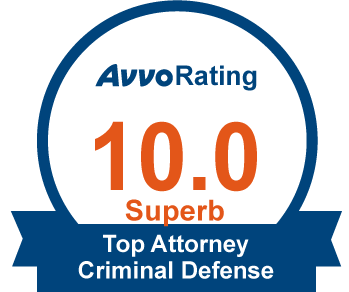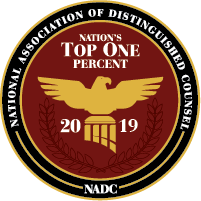Anyone involved in the supply, manufacture, or selling of illicit drugs, narcotics, or other controlled substances will face felony charges. The long-term consequences are strict due to the nature of this crime. When facing this type of drug offense it’s highly recommended you find a criminal defense attorney to fight on your behalf.
Attempting to defend yourself without effective legal counsel is extremely difficult, especially when you are facing maximum sentencing. Aside from these substances being categorically addictive, the manufacturing labs are also known to release pollutants into the environment. Methamphetamine labs, for instance, are susceptible to explosions due to the hazardous materials involved in making it.
To gain a more critical understanding of this statute, we must first take a look at how California defines the manufacturing of controlled substances.
Free Consultation (619) 233-4433
Definition of Manufacturing Controlled Substances
This statute is outlined under California’s Health and Safety Code 11379.6. It prohibits the overall manufacturing of drugs, narcotics, and other illicit controlled substances. This law is violated when you:
- Participate in or offer to participate in,
- Either you were personally engaged in synthesizing the drugs OR
- You volunteered or offered to be involved in the production process.
- Unlawful manufacturing of illegal drugs, narcotics, and restricted controlled substances.
- Manufacture means you helped produce, create, or synthesize said drugs.
- This process may or may not include combining, extracting, converting, deriving, compounding, processing, producing, or preparing hard or designer drugs.
- Drugs, narcotics, and controlled substances that fall under this law include opiates, opioids, uppers, downers, designer drugs, and narcotics such as:
- Cocaine, GHB, heroin, LSD, morphine, codeine, oxycodone, Vicodin, opium, ecstasy, PCP, methamphetamine, and synthetic marijuana.
Furthermore, you can also face charges for violating HS 11379.6 if you:
- Only took beginning or initial steps in the process, thus unable to complete the manufacturing of controlled substances;
- Currently or were intermediately involved in any stage of the operation; or
- Presented your expertise and/or services, or offered general help in developing the drugs in question.
Associated Offenses
California Health & Safety Code 11379, transportation and/or sale of methamphetamine;
Transporting meth by driving a motor vehicle while possessing methamphetamine and/or to sell methamphetamine is a crime. You also commit this crime if you give away or administer this controlled substance to another person.
California Health & Safety Code 11366.5, permitting others to use your home or other structure for manufacturing controlled substances;
Knowingly lending your home, room, space, or another dwelling you control to other people and allowing them to manufacture drugs, narcotics, or other controlled substances is a crime.
California Health & Safety Code 11350, possession of controlled substances;
Possessing a controlled substance without having a valid prescription for it is a crime. This crime is also referred to as possession for personal use or simple possession.
California Health & Safety Code 11351, possession of drugs for sale;
This law prohibits the possession of drugs for sale. This includes but is not limited to cocaine, GHB, heroin, LSD, peyote, morphine, hydrocodone, codeine, oxycodone, or Vicodin.
California Health & Safety Code 11352, sale or transport of controlled substances;
You violate this statute when you sell or transport unlawful prescription pain meds or restricted controlled substances. This type of contraband includes drugs like cocaine, GHB, heroin, LSD, peyote, morphine, hydrocodone, oxycodone, or Vicodin.
California Health & Safety Code 11550, being under the influence of a controlled substance;
It is a crime to be under the influence of an unlawful controlled substance unless otherwise administered or prescribed by a medically licensed professional.
The Prosecution
The facts of the case must be proven beyond a reasonable doubt for the prosecution to successfully convict someone of HS 11379.6. There are two specific elements they must prove when it comes to the manufacturing of drugs, narcotics, and other controlled substances.
Elements of the Crime
- The defendant engaged in or offered to participate in,
- You can still be guilty even if you never physically touched any materials needed to complete the process. Simply exhibiting some control in any stage of the process could make you liable for this offense.
- The unlawful manufacture, production, or preparation of controlled substances.
- Even if the defendant only participated for a short time or was just involved in one step of the operation, they could still face charges.
- The attempt to manufacture narcotics is also punishable under this statute.
- The defendant still faces felony consequences whether they were just beginning, at an intermediate stage, or nearly complete.
Who Can Be Charged
The following are situations that can lead to charges for HS 11379.6, the manufacture of controlled substances.
Example 1:
Rita owned two homes and one was a trailer that she rented out. She found out her tenants were manufacturing crystal meth in it. Instead of turning them in, she wanted a cut of the profit. She struck a deal with them and allowed them to continue using her trailer. At this point, Rita could face charges for HS 11366.5, permitting people to use her property for manufacturing meth. Her tenants offered her more money if she would help them measure out and fill the baggies. She agreed.
Although Rita did not involve herself in compounding any chemicals to create the crystal meth, she did lend a hand to separating and packaging it. This is considered assisting in the processing and preparation of an illegal drug. Even though she was hardly involved in the whole operation, she still helped with the drug’s final preparation and could face charges for HS 11379.6, the manufacture of methamphetamine.
Example 2:
Samuel and his friends wanted to manufacture designer drugs. He offered them his workspace, a chemistry lab in his basement. They got to work producing small amounts of ecstasy, molly, and generic party drugs. After their first batch, the basement flooded, destroying their equipment. They weighed the risks and decided to sell what they had and stopped making any more.
Samuel and his friends are guilty of HS 11379.6 for the manufacturing of illicit drugs. The fact that they produced a small number of designer drugs and decided to quit after the basement flooded is irrelevant. They will still be guilty of this crime regardless of how long the lab was operational.
Example 3:
Zack was hired by Phil to manufacture piperidine, a compound, that when combined with cyclohexanone can produce PCP (phencyclidine). He was not manufacturing the latter chemical, so he thought his actions were innocent. However, Phil was planning on using this chemical to eventually make PCP and Zack knew about it.
Zack could face charges for HS 11379.6, even though he only produced an aspect of the controlled substance. Piperidine on its own cannot be used to manufacture PCP, however, the intent was there. Zack not only willingly took this job from Phil but he was also fully aware that in the end, it was all going to be used for manufacturing PCP.
Legal Defense
Fortunately, there are common defenses that have been used to successfully fight these charges. A skilled drug crimes lawyer will be familiar with what defensive route would be the most applicable to your case. Retaining the right legal representation can mean the difference between facing lighter sentencing or the maximum penalties.
Mistaken Identity and False Arrest
Sadly, there are cases where people are mistakenly identified or falsely accused, which can lead to a false arrest. Many times, a lack of knowledge about the crimes in question plays a huge part in getting these false charges dropped.
For instance, Jose was housesitting for his friend Laura while she was on vacation. He decided to drop acid and eat hallucinogenic mushrooms while he was there. He did not know that her basement was full of equipment used to manufacture GHB and other controlled substances. The home was raided by police and Jose was arrested.
Jose is guilty of being under the influence of illicit substances and could be charged with HS 11550. However, he should not face charges for HS 11379.6 because he was not directly nor indirectly involved in manufacturing any drugs. Laura would be the guilty party, even though she was away. Just because he was coincidentally under the influence of hallucinogenic drugs, does not mean his crimes should rise to the same level as the manufacturing of controlled substances.
Search and Seizure Laws
California has strict search and seizure laws, meaning law enforcement can only search your property if they have a legal warrant or reasonable probable cause. If the case lacks these factors, this can be used as a defense. However, the efficacy of this type of defense lies in the expertise of an experienced criminal defense attorney.
For instance, Mickey was in the beginning stages of manufacturing synthetic marijuana in his basement. Law enforcement suspected his operation was taking place at his business, an auto-body shop. They attained a warrant to search his shop and found nothing illegal. They continued the search by going to Mickey’s home. They found the equipment and chemical materials necessary to make synthetic marijuana and arrested him for HS 11379.6.
The police officers may have had a valid search warrant, but it only encompassed Mickey’s business, not his home. This would be an example of illegal search and seizure because they exceeded the search limits of the warrant.
Coercion and Forced Participation
Meth labs and other drug manufacturing operations typically come with an increase in overall criminal activities. Sometimes, this can lead to people being tricked, coerced, or forced into something they do not want to do.
For instance, Stacey and Mira were homeless and needed a place to stay. They met Polly, a friendly guy who offered to let them stay in his basement if they could help with his business. Desperate and ignorant of what type of business he ran, the women agreed and followed him home. Once there, he shared cocaine and Percocet with them. He then led them into his basement and threatened them. He told them he would turn them in for being junkies or threaten to physically harm them unless they helped him manufacture meth. Scared for their lives, the women complied with his orders.
Polly is the guilty party in this scenario and would face kidnapping, assault, and drug manufacturing offenses. Stacey and Mira did unlawfully take cocaine and Percocet as well as participate in the manufacturing of meth, however, there are mitigating factors. Polly led them to his house under false illusions of safety, held them against their will, and forced them to work under threat of psychological and physical harm. Stacey and Mira should not be guilty of HS 11379.6 because they did not willfully intend to manufacture any drugs, they were under duress to do so.
Penalties for HS 11379.6
There are slightly different punishments depending on specific details of your case. Regardless of which one you are facing, it carries felony consequences.
If convicted of engaging in the manufacturing of illegal controlled substances, you face;
3, 5, or 7 years in state prison, and
Fines of up to fifty thousand dollars.
If convicted for offering to engage in said manufacturing, you face;
Formal (felony) probation, and
Up to 1 year in county jail, OR
3, 4, or 5 years in county jail.
Penalty Enhancements for HS 11379.6
When certain factors are present in the crime, you face these enhanced penalties. The following sentencing is to be served consecutively. This means in addition to the general penalties above.
If you have a prior felony conviction for a drug-related crime, three more years could be added to your general sentence. This also means you could potentially face three years for each prior felony drug conviction.
Concerning the manufacturing of PCP and/or meth – If injury or death occurred you face an additional one year for each injured or killed person.
If manufacturing meth took place in a dwelling where a child was staying, a minor under the age of 16, you will face maximum sentencing. If the manufacture of meth or PCP happened or was attempted while a child was present, you face a consecutive two years to be added to your state prison sentence. An additional and consecutive five-year prison term will be applied if a child suffered a great bodily injury or died.
If manufacturing took place near an occupied structure, that is, within two hundred feet of any other dwelling or building where a person or people were present, you face the maximum incarceration sentence.
Concerning large quantities of PCP, meth, and/or GHB – For manufacturing three gallons of liquid compounds or one pound of solid material, three years will be added to your sentence. If the drugs in question exceeded ten gallons in liquid form or three pounds in solid form, five years will be added to the overall sentence. Amounts at or above twenty-five gallons of liquid or ten pounds of solid will mean an additional ten years will be added to the incarceration time. Lastly, an additional fifteen years could be added to the overall sentence if the weight was at or above one-hundred-five gallons of liquid or forty-four pounds of solid.
Penalties for Related Offenses
California Health & Safety Code 11379, sale and/or transportation of methamphetamine;
Felony;
2, 3, or 4 years in county jail, and/or
Fines of up to ten thousand dollars.
California Health & Safety Code 11366.5, permitting others to use your home or other structure for manufacturing controlled substances;
Misdemeanor;
Up to one year in county jail, and/or
Fines of up to one thousand dollars.
Felony;
16 months, 2, 3, or 4 years in county jail, and/or
Up to ten thousand dollars in fines.
California Health & Safety Code 11350, possession of controlled substances;
Misdemeanor;
Up to 1 year in county jail, and/or
Fines of up to one thousand dollars.
California Health & Safety Code 11351, possession of drugs for sale;
Felony:
Formal (felony) probation, and
Up to 1 year in county jail, or
2, 3, or 4 years in county jail, and/or
Fines of up to twenty thousand dollars.
California Health & Safety Code 11352, sale of controlled substances;
Felony;
Formal probation,
3, 4, or 5 years in county jail,
Up to twenty thousand dollars in fines.
California Health & Safety Code 11550, being under the influence of a controlled substance;
Misdemeanor;
Summary (informal) probation, and/or
Up to one year in county jail.
Call Us For Help
Are you or someone you love facing charges for manufacturing narcotics or illegal drugs? If you are located in the greater San Diego area, Orange County or Los Angeles contact the Law Offices of Anna R. Yum. As an award-winning defense lawyer, Attorney Yum understands what it takes to defend your rights and your future.
For more information on HS 11379.6 or any of the related offense, don’t hesitate to give us a call. If you want to discuss your case in further detail schedule a free, no-obligation consultation at 619-233-4433 or use our online contact form.











